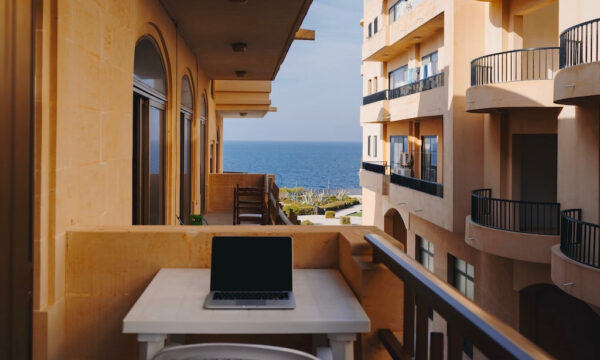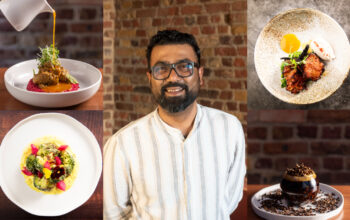Smart strategies for eating on a budget while travelling

Food expenses can easily devour half of a travel budget if not managed carefully, turning dream vacations into financial nightmares. Smart travellers understand that eating well doesn’t necessitate expensive restaurants or tourist traps that charge premium prices for mediocre meals. Just like finding value with bruce bet kod promocyjny bez depozytu offers, discovering affordable dining options requires strategy, research, and a willingness to explore beyond the obvious choices. The secret to maintaining food budgets lies in balancing authentic local experiences with practical meal planning. It is unnecessary to survive on instant noodles or skip meals to save money – it’s about eating smarter and knowing where locals actually dine.
Local markets and street food adventures
Street vendors and local markets offer the most authentic and affordable eating experiences in virtually every destination worldwide. These establishments serve fresh, flavorful meals at prices that cater to local incomes rather than tourist budgets.
Research food safety standards in the destination and choose vendors with high turnover rates where food stays fresh. Look for stalls with long lines of locals – they indicate which vendors offer the best quality and value combinations.
Morning markets provide excellent opportunities for fresh fruits, vegetables, and breakfast items at local prices. Many markets also feature prepared foods that showcase regional specialties without restaurant markup costs.
Smart market shopping strategies:
- Visit markets early for best selection and freshest ingredients
- Bring small bills for easier transactions with vendors
- Learn basic food vocabulary in the local language
- Watch preparation methods to ensure food safety standards
- Ask locals for vendor recommendations
These authentic experiences often become trip highlights while keeping food costs remarkably low compared to restaurant dining.
Grocery shopping and self-catering benefits
Accommodations with kitchen facilities unlock significant savings potential through strategic grocery shopping and meal preparation. Even basic cooking capabilities like microwaves or mini-fridges create budget-friendly dining options.
Local supermarkets reveal authentic food culture while offering ingredients at resident prices. Purchase items for simple meals like sandwiches, salads, pasta dishes, or regional specialties that require minimal cooking skills.
Breakfast preparation saves substantial money since hotel dining typically charges premium rates for basic items. Simple purchases like bread, eggs, coffee, and fruit provide satisfying morning meals at a fraction of restaurant costs.
Meal Type | Self-Catering Options | Potential Savings |
Breakfast | Bread, eggs, coffee, fruit | 60-80% vs hotel dining |
Lunch | Sandwiches, salads, local snacks | 40-60% vs restaurants |
Dinner | Pasta, local ingredients, simple dishes | 30-50% vs dining out |
Snacks | Nuts, fruits, local treats | 70-90% vs tourist shops |
These savings accumulate quickly over extended trips, freeing the budget for experiences, accommodations, or transportation upgrades.
Restaurant timing and location secrets
Tourist areas consistently charge inflated prices for average quality food. Walk a few blocks away from major attractions to find restaurants where locals actually eat, with prices reflecting local economic conditions rather than visitor expectations.
Lunch menus often feature identical dishes at lower prices than dinner service. Many upscale restaurants offer lunch portions of signature dishes at significant discounts, allowing to experience quality dining without evening premium costs.
Happy hour specials and early bird dining provide access to regular menu items at reduced prices. Research timing for these promotions to enjoy restaurant experiences while maintaining budget discipline.
Weekday dining typically costs less than weekend meals at the same establishments. Plan special dining experiences for Monday through Thursday when possible to take advantage of lower demand pricing.
Smart meal planning and portion strategies
Large restaurant portions in many countries provide opportunities for meal sharing or leftover planning. Order one substantial dish to split between two people, supplemented with appetizers or sides for complete satisfaction. Breakfast-heavy eating patterns maximize value from hotel continental breakfasts or affordable morning meals, allowing lighter and less expensive lunch and dinner options throughout the day.
Research local dining customs and meal timing to avoid tourist-trap pricing during peak service hours. Many cultures eat main meals at different times than typical tourist expectations, creating opportunities for better prices and authentic experiences.
Budget-conscious dining approaches:
- Share large portions between travel companions
- Focus on substantial breakfasts and lighter dinners
- Take advantage of lunch specials at upscale establishments
- Research local meal timing customs
- Pack snacks for energy between planned meals
These strategies maintain nutrition and satisfaction while dramatically reducing daily food expenses across extended travel periods.
Beverage cost management
Drinks often account for surprisingly large portions of dining expenses, especially alcoholic beverages in tourist-focused establishments. Water costs vary dramatically between destinations, making hydration strategy important for budget control. Purchase beverages from grocery stores rather than restaurants when possible. Local beer, wine, and soft drinks cost fractions of restaurant prices when bought at markets or convenience stores.
Refillable water bottles eliminate constant purchase needs while supporting environmental responsibility. Research local water safety and filtration options to maintain hydration without recurring bottle costs.
Coffee culture varies globally, with some destinations offering excellent café experiences at very reasonable prices while others charge premium rates for basic beverages. Learn local coffee customs to find authentic experiences at appropriate price points.
The path to affordable travel dining
Save money on food while traveling by combining these strategies rather than relying on single approaches. Mix street food adventures with grocery shopping, restaurant lunch specials with self-prepared breakfasts, and local market discoveries with planned dining experiences.
Budget travel food success comes from research, flexibility, and willingness to eat like locals rather than tourists. The most memorable meals often happen at small family establishments or market stalls that don’t appear in guidebooks.
The editorial unit

























Facebook
Twitter
Instagram
YouTube
RSS